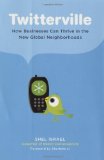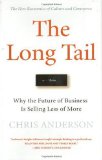Twitter Experiment: Why Follow?
I usually follow people on Twitter that have something to say and is related to my career. I always found it interesting when people just followed everyone.
So when this twitterer recently “followed” me, I was intrigued. he or she (I’m assuming she due to the image) is trying an experiment. She is trying to figure out how many people just blindly follow people without checking out the content of twitterer.
When I last checked, this person was following over 5900 people with 155 reciprocating.
This raises an interesting question about the psychology of following. When I first started Twitter, I felt that I had to follow everyone who followed me. Otherwise, I would be dissing someone.
Now I don’t necessarily follow everyone – I just don’t have the brain power to process that many people. I will also occasionally unfollow folks who haven’t really participated in conversations.
I think it’s key to recognize that social media can increase one’s social network. Just remember, you can only create a nework that YOU’RE comfortable with. YOU create the network. It doesn’t create you.
4 Comments
Leave a comment
Additional comments powered byBackType
About
Favorite Service
Recent Comments
- on Going Virtual Isn’t Necessarily the Answer to Replacing Your Physical Events
- on Going Virtual Isn’t Necessarily the Answer to Replacing Your Physical Events
- on Going Virtual Isn’t Necessarily the Answer to Replacing Your Physical Events
- on Going Virtual Isn’t Necessarily the Answer to Replacing Your Physical Events
- on Going Virtual Isn’t Necessarily the Answer to Replacing Your Physical Events
Ads by Google
Favorite Books
Marketing Blogs
PR Blogs
- KD Paine's Measurement Blog
- Micro Persuasion
Virtual Events & Meetings Blogs
- Cisco Virtual Environments
- It's All Virtual
- The Webinar Blog
- Virtual Edge Institute

 Follow
Follow Cece Salomon-Lee is director of product marketing for Lanyon Solutions, Inc. and author of PR Meets Marketing, which explores the intersection of public relations, marketing, and social media.
Cece Salomon-Lee is director of product marketing for Lanyon Solutions, Inc. and author of PR Meets Marketing, which explores the intersection of public relations, marketing, and social media. 



I follow everyone that follows me. I have a robot doing that for me to make it easier.
I also follow about 200 to 400 people a day. I give them two days to follow back. After that time then I unfollow everyone who has not followed back. Then I repeat.
But that is just the part of it. Making good quality tweets is most important or the whole technique will fail. If you follow me http://twitter.com/captainjack63 and watch my tweets you will soon see why many people follow back when I follow them. At the time of this post I have about 14,000 followers.
Some people tell me that’s must be hard to keep track of that many twitters. It’s not a problem. I don’t use tweetdeck either. I do use itweet.net but that’s about it.
Captain Jack
___/)_____
Good post. I’m just getting into Twitter, which I’ve heard described as spam proof, since you choose who you follow.
Some of us attended the recent RSA conference, and hooked into some media opportunities through the Twitter feed some reporters were putting out.
Hi Mario,
I haven’t looked into the 3rd party apps yet – I want to. One place to receive updates would be great. But you’re right, the time to qualify prospective followers is killing me.
Do you think Twitter will have to deal with the spammers soon or risk losing people jumping ship? Interesting question indeed….
Hi there,
I have my profile on lockdown because I use a 3rd party app (Twhirl) for which I only receive 60-90% o all tweets from people I follow anyway (worst at peak usage times among people I follow). Thus, relevancy from acquaintances and friends I know is of utmost importance.
As a result, I feel truly more connected to the folks I follow because the interest is mutual (though there are a few renegade folks I want to say – hey, we met and know each other, follow me back! ? ). Secondly, the entire experience is much more productive with far fewer and more relevant follow requests. Over the last 3 weeks I started getting more spammers following, to which I got email notifications, then had to review their profile for interest in deciding to follow. All of that was killing my time!
I don’t want to be considered rude or unfriendly by having such a policy, but I’m beginning to regard Twitter relationships like a trusted email policy.